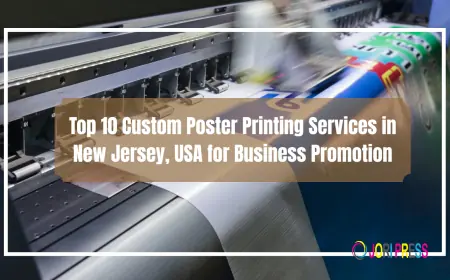Edge & Hybrid Cloud: Emerging Patterns in SaaS Integration Services
Discover how edge computing and hybrid cloud are transforming SaaS Integration Services—boosting speed, scalability, and real-time performance.
In recent years, SaaS integration has undergone a significant evolution, shaped by the rapid adoption of edge computing and hybrid cloud architectures. The traditional approach to cloud integration—centralized, monolithic, and hosted on a single cloud—no longer meets the agility, speed, and scalability demands of modern enterprises. As businesses increasingly operate in distributed, data-driven environments, SAAS Integration Services are being reimagined to bridge the gap between the cloud, the edge, and everything in between.
This transformation is not just a technological shift but a strategic one—reshaping how organizations build, deploy, and manage SaaS ecosystems that connect users, data, and services across multiple platforms.
Understanding the Evolution of SaaS Integration
At its core, SaaS integration is about enabling seamless communication and data flow between cloud-based applications. For years, this relied heavily on centralized APIs, middleware, and iPaaS (Integration Platform as a Service) tools. However, as companies moved toward hybrid environments—where data resides across on-premises systems, public clouds, and edge devices—the complexity of integration skyrocketed.
Traditional SaaS integration methods struggled to handle low latency requirements, real-time analytics, and data sovereignty rules. Enter the new wave: edge computing and hybrid cloud integration, which together bring scalability, flexibility, and speed to the forefront of SaaS ecosystems.
Why Edge and Hybrid Cloud Matter in Modern Integration
1. The Rise of Edge Computing
Edge computing refers to processing data closer to where it is generated—on devices, gateways, or local servers—rather than sending it all to centralized cloud servers. For SaaS applications, this reduces latency, enhances real-time responsiveness, and ensures continuous operations even when connectivity is limited.
For example, in IoT-heavy sectors like manufacturing, logistics, or healthcare, edge-driven SaaS integrations allow data to be analyzed instantly at the source, providing immediate insights while syncing periodically with the cloud for central data management.
2. The Hybrid Cloud Imperative
Hybrid cloud brings flexibility—blending private and public clouds to optimize workloads, manage sensitive data securely, and control costs. For organizations that rely on multiple SaaS solutions, hybrid cloud integration ensures that data flows seamlessly across diverse environments.
Hybrid setups empower enterprises to choose where each part of their SaaS stack runs—some workloads on public clouds like AWS or Azure for scalability, and others on private infrastructure for compliance and data protection. The result? A unified, interoperable system that blends agility with governance.
Emerging Patterns Shaping SaaS Integration in 2025
The intersection of edge computing and hybrid cloud is driving several key trends in how SaaS platforms are integrated and operated. Let’s explore the most impactful patterns shaping SAAS Integration Services today.
1. API-First Integration Models
APIs remain the backbone of SaaS connectivity. However, modern integration models emphasize API-first architectures—designing systems where every service and data stream is accessible via APIs.
API-first design not only promotes interoperability but also simplifies hybrid and edge integration by allowing decentralized systems to communicate using lightweight, secure protocols such as REST, GraphQL, and gRPC.
2. Microservices and Event-Driven Architecture
Monolithic applications are giving way to modular, microservice-driven architectures. This approach is crucial in hybrid environments, where scalability and resilience are key.
Event-driven integration—where services respond to real-time triggers and data changes—has become foundational for modern SaaS systems. Together, these patterns allow SAAS Integration Services to deliver highly dynamic, loosely coupled applications that perform seamlessly across distributed infrastructures.
3. AI and Automation in Integration Workflows
AI-driven automation is redefining SaaS integration efficiency. Machine learning models embedded in integration platforms now predict data flow bottlenecks, automate API mapping, and even resolve minor integration failures autonomously.
Intelligent iPaaS tools can auto-generate integration pipelines between SaaS apps—significantly reducing manual coding and improving time-to-market. This is particularly beneficial for enterprises managing hundreds of interconnected SaaS tools in hybrid setups.
4. Low-Code and No-Code Integration Platforms
A growing number of businesses are adopting low-code and no-code integration tools to accelerate innovation. These platforms empower business users to build workflows and connect SaaS systems without needing deep technical knowledge.
While they simplify integration at scale, expert SAAS Integration Services providers play a critical role in securing, optimizing, and scaling these low-code deployments for enterprise-grade reliability.
5. Security-Driven Integration Strategies
Security remains a primary concern in multi-cloud and hybrid environments. With data traversing various networks and platforms, SaaS integrations must ensure encryption, compliance, and identity management at every layer.
The modern approach combines zero-trust architectures, API gateways, and end-to-end encryption to maintain data integrity across environments. Integration providers are also embedding continuous compliance monitoring within pipelines—ensuring alignment with GDPR, HIPAA, and ISO standards.
6. Observability and Integration Monitoring
Visibility is now a non-negotiable requirement. Observability platforms integrated within SaaS ecosystems provide real-time metrics, logs, and traces that allow businesses to monitor integration health and performance.
Edge-based observability is emerging as a must-have, helping organizations track latency, detect anomalies, and manage microservices performance even in disconnected or remote edge environments.
Business Benefits of Edge and Hybrid SaaS Integration
Organizations adopting these emerging integration paradigms are reaping measurable advantages, from operational efficiency to competitive differentiation.
1. Enhanced Performance and Responsiveness
Edge integration enables faster processing and decision-making, eliminating delays caused by cloud round-trips. This is vital for industries requiring millisecond responses, such as autonomous systems or financial trading platforms.
2. Improved Data Control and Compliance
Hybrid integration empowers businesses to keep sensitive data within private infrastructure while leveraging public cloud scalability for non-critical workloads. This balance ensures compliance without sacrificing innovation.
3. Reduced Costs through Optimized Workloads
By intelligently distributing processing between the edge, private, and public clouds, companies can minimize data transfer costs and infrastructure overhead—optimizing both performance and budget.
4. Scalable and Resilient Architectures
Distributed SaaS integration designs offer resilience against outages. If one system fails, edge or hybrid redundancy ensures operations continue without disruption.
Challenges in Edge and Hybrid SaaS Integration
Despite the benefits, implementing these models comes with unique challenges.
1. Integration Complexity
Managing hybrid environments means dealing with multiple APIs, protocols, and infrastructure providers. This complexity requires strong expertise in multi-cloud orchestration and security.
2. Security and Governance
With data moving between private, public, and edge nodes, enforcing consistent governance and access control becomes difficult. Without a unified policy framework, vulnerabilities can arise.
3. Skill Gaps
Building and maintaining edge-hybrid SaaS integrations require specialized knowledge in distributed systems, cloud security, and DevOps automation—skills that many internal IT teams lack.
This is why more enterprises are turning to SAAS Integration Services providers with deep technical expertise to design and manage these advanced architectures securely and efficiently.
The Future of SaaS Integration: From Cloud-Centric to Distributed
The future of SaaS integration lies in distributed intelligence—systems where computing and analytics occur across multiple layers of infrastructure. As 5G expands and edge hardware becomes more capable, integrations will move closer to real-time, autonomous ecosystems.
In the coming years, SAAS Integration Services will evolve to:
-
Leverage AI for predictive integration orchestration
-
Automate hybrid-cloud workload distribution
-
Support decentralized architectures using blockchain-backed trust layers
-
Deliver integration as microservices, deployable anywhere—from data centers to edge devices
Ultimately, SaaS integration will no longer be just about connecting apps—it will be about creating adaptive, intelligent ecosystems that respond dynamically to business needs.
Conclusion
The convergence of edge computing and hybrid cloud is redefining what’s possible in the SaaS ecosystem. Enterprises that once viewed integration as a backend necessity now see it as a strategic differentiator driving speed, agility, and innovation.
Modern SAAS Integration Services are no longer confined to the cloud—they extend to the edge, unify hybrid environments, and empower businesses to deliver connected experiences faster and smarter than ever before.
As technology continues to evolve, one thing is certain: the future of SaaS integration will be distributed, intelligent, and endlessly adaptable. For more information visit Impressico Blogs
What's Your Reaction?
 Like
0
Like
0
 Dislike
0
Dislike
0
 Love
0
Love
0
 Funny
0
Funny
0
 Angry
0
Angry
0
 Sad
0
Sad
0
 Wow
0
Wow
0



















































